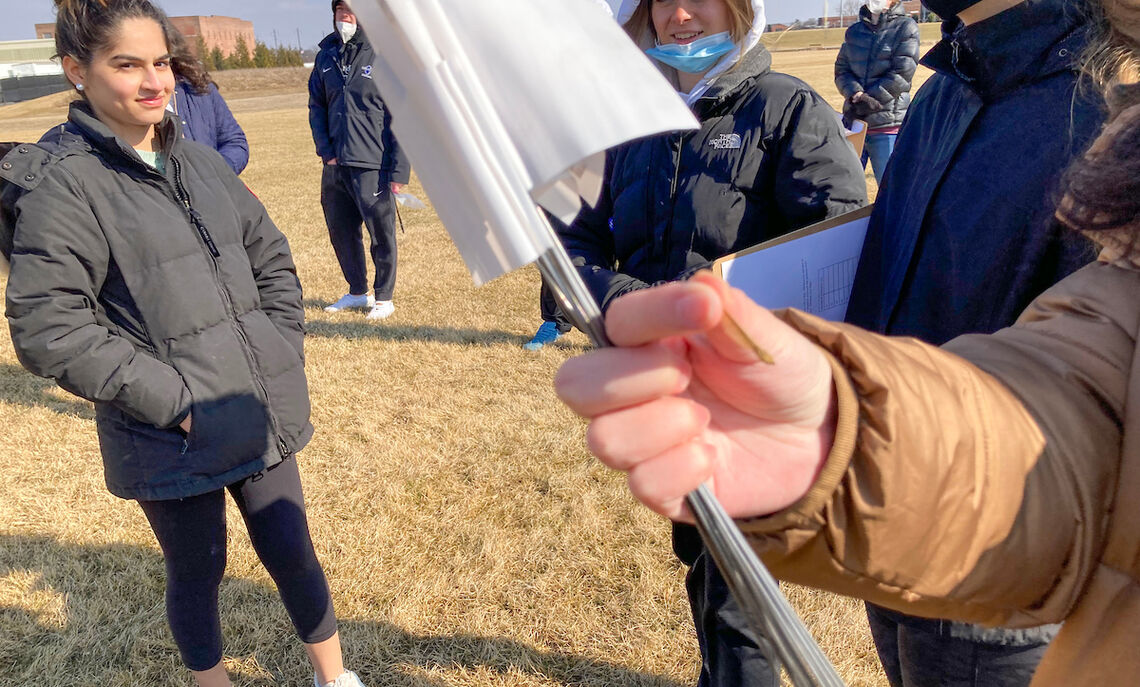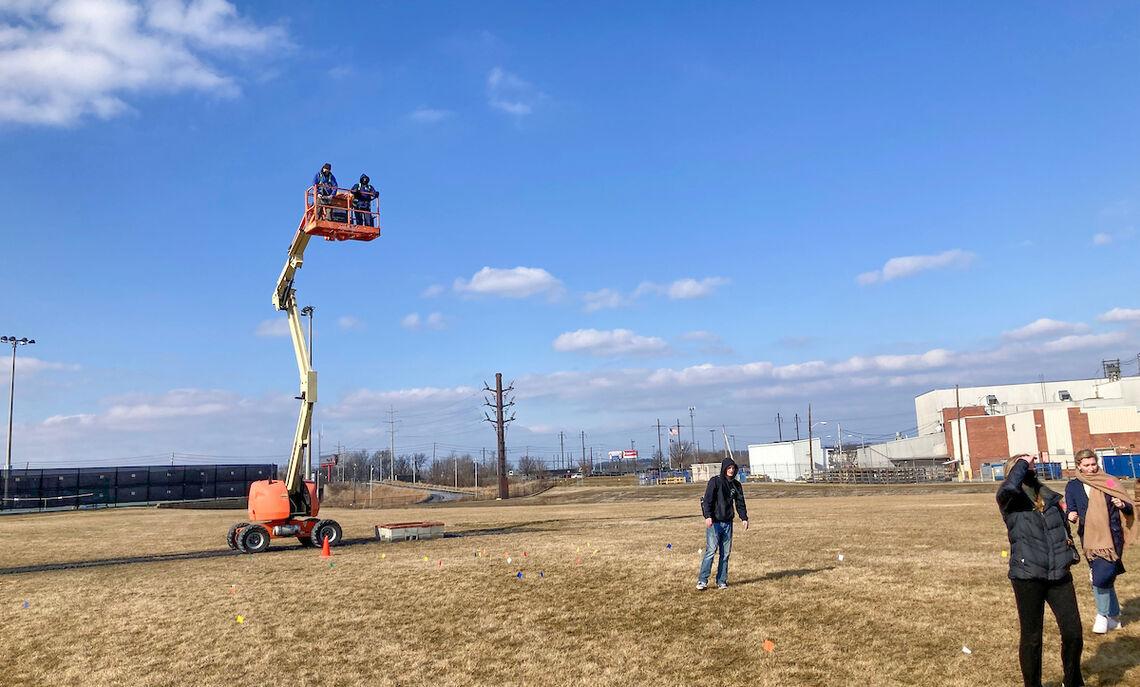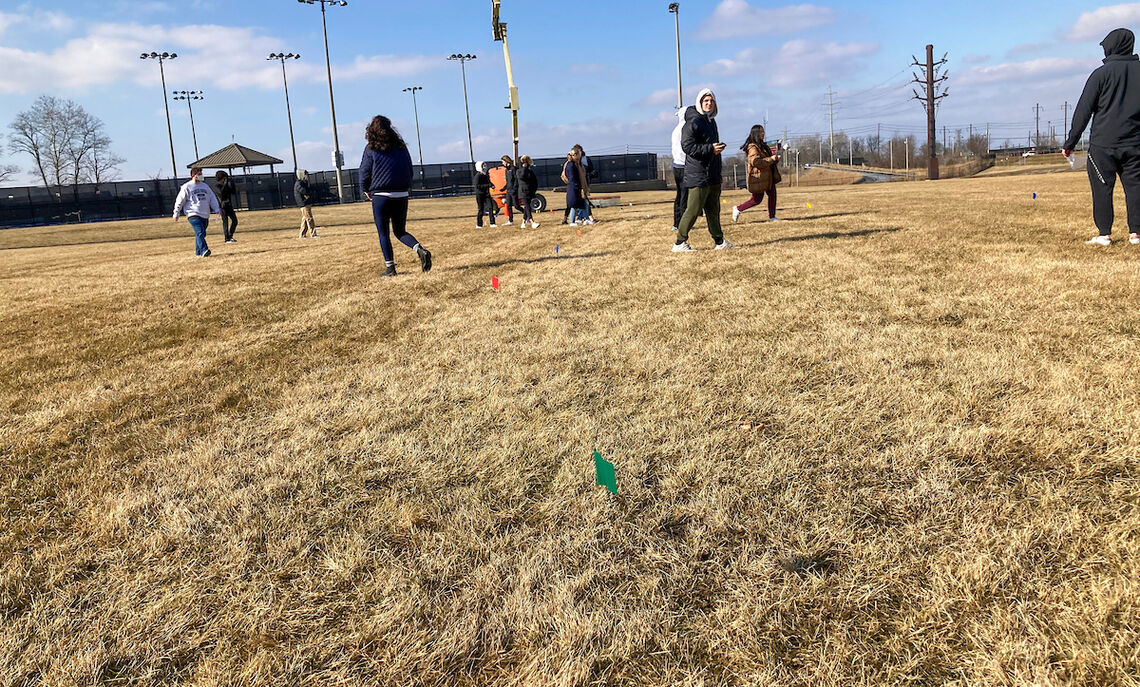F&M Stories
Flight of the Samaras
On an expansive field near Brooks Tennis Center, students in an introductory biology class stare up at their professor, perched on a lift raised 31 feet against a clear blue sky.
Reaching into a bag, he calls "red!", and releases a barely discernable samara, a winged (seed) maple fruit that gets caught in the wind and spins madly in flight across the field.
A group of students with red flags chase after, watching the samara's landing, then flag-marking the spot to measure and record the distance it traveled across the Franklin & Marshall expanse.
Many students remember being fascinated by the flight of these "helicopters" as children, but now develop a deeper appreciation for their biology through this investigative laboratory.
The lab explores how seeds disperse various distances from the parent tree, creating a "seed shadow," where most seeds land relatively close to the parent but some travel up to 410 feet.
Most dispersing fruits and seeds do not spin, but the samara's special cross-sectional shapes, like airplane wings and helicopter rotors, generate lift and keep it aloft, Professor of Biology Janet Fischer said.
"For species employing wind as their primary dispersal, the sizes and forms of fruits or seeds play critical roles in maximizing dispersal potential," she said.
When Professor of Biology Dan Ardia finished dispersing the Acer saccharinum (silver maple) samaras, students returned to the lab to analyze the data they collected.
"The field exercise was useful to conceptualize the natural processes in a controlled environment," said Nick Male, a junior environmental studies major.
At the lab, students tested hypotheses about differences in seed shadows between species (red maples vs. silver maples), and studied the ecological effects of wind on dispersal.
"Over the course of a single afternoon, students used the scientific method to formulate an interesting hypothesis and draw a conclusion based on evidence," Fischer says. "This experience moves students beyond the textbook and empowers them to develop as scientists."
For first-year Leila Jalal, the lab helps her develop "a deeper understanding" of how this natural process works under many conditions.
"That sort of fieldwork is why I enjoy STEM so much," she says. "It makes science more accessible as most of the stuff we do could also be replicated in our own back yard."
Related Articles
December 16, 2025
Research Club Kickstarts Students’ Science Careers
At Franklin & Marshall, a distinctive opportunity for hands-on learning gives students the chance to participate in collaborative research as early as their second week on campus. The Nanobots Research Club meets weekly and aims to help students interested in STEM research connect with each other in a casual, drop-in setting, while learning to use computational chemistry tools
December 8, 2025
A Diplomat’s Deep Dive into Marine Biology
Learning by doing is part of our DNA as Diplomats. Jaeyun An ’26 dove headfirst into this philosophy, spending a semester in the turquoise waters of Turks and Caicos researching the island’s diverse marine life. “This experience gave me the confirmation that this was what I wanted to do for the rest of my life,” he said.
November 21, 2025
What is Extended Reality–and Why are F&M Students Researching It?
Learning by doing is in our DNA as Diplomats. For Sujal Shah ’27 and Kha Nguyen ’28, this meant collaborating with their computer science professor to research how extended reality can be used for safer, more effective employee training.





